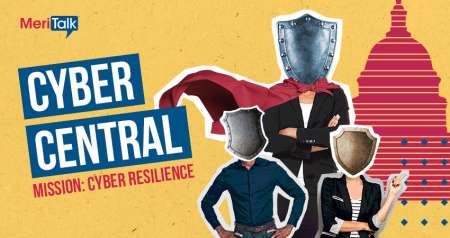
President Biden today issued an executive order (EO) that elevates the importance of quantum information science (QIS) by reconstituting a previously created Federal QIS advisory committee and putting it more closely under the White House’s wing, while at the same time issuing a National Security Memorandum that lays out plans to address cybersecurity risks posed by quantum computers.
The two actions announced by the White House have tightly linked but differing goals: promoting U.S. leadership in QIS; while also “mitigating the risks that quantum computers pose to America’s national and economic security,” the White House said.
On the risk mitigation front, Federal agencies will be tasked with inventorying their IT systems and updating cryptographic systems to protect against cyber risks that will emerge from advancements in quantum computing.
Reforming Quantum Advisory Committee
President Biden’s EO, the White House said, establishes a new version of the National Quantum Initiative Advisory Committee that originally was set up in 2019 by President Trump to help direct Federal research and investments into quantum computing, and help Federal agencies tasked with implementing the 2018 National Quantum Initiative Act.
Biden’s EO issued today revokes the previous Trump EO that created the committee.
According to the text of the new EO, the committee will provide advice to the President, the National Science and Technology Council (NSTC) Subcommittee on Quantum Information Science (SCQIS), and the NSTC Subcommittee on Economic and Security Implications of Quantum Science (ESIX), regarding the National Quantum Initiative created by the 2018 law.
The committee will have up to 26 members, with at least one co-chair appointed by the Director of the White House Office of Science and Technology Policy (OSTP). Members will include people from industry, academia, and Federal laboratories, among others.
The EO announced today will place the committee “directly under the authority of the White House, ensuring that the President, Congress, Federal departments and agencies, and the general public receive the most current, accurate, and relevant information on quantum information science and technology to drive forward U.S. policymaking and advance our technological edge,” the White House said.
“The United States has long been a global leader in the development of new technologies, like QIS,” the White House declared.
“While QIS itself is not new, recent breakthroughs in QIS have shown the potential to drive innovations across the American economy, from energy to medicine, through advancements in computation, networking and sensing,” the White House said. “Breakthroughs in QIS are poised to generate entirely new industries, good-paying jobs, and economic opportunities for all Americans.”
NSM Aims at Cyber Risks
Separately, the White House said that the National Security Memorandum will create plans to begin “the lengthy process” of updating U.S. IT infrastructure to protect against the cybersecurity threats posed by quantum computing.
To address that risk, the National Institute of Standards and Technology (NIST) is being charged with publishing “new quantum-resistant cryptographic standards that can protect against these future attacks.” The White House said. “However, the process to transition America’s most vulnerable IT systems to these new standards will take time, resources, and commitment.”
The NSM’s aims, the White House said, include:

- Positioning the U.S. to remain a global leader in tech development, and particularly in QIS, by tasking Federal agencies “to pursue a whole-of-government and whole-of-society approach to harness the economic and scientific benefits of QIS for all Americans, as well as the security enhancements of new cryptographic systems.”
- Setting forth policies “to promote quantum-relevant education programs and workforce development initiatives,” taking a coordinated approach to scientific research, and encouraging partnerships with industry, academia, and allies.
- Collaborating with industry including through a NIST-sponsored Migration to Post-Quantum Cryptography Project at the National Cybersecurity Center of Excellence, and creating an open working group with industry for research and adoption of quantum-resilient cryptographic standards and technology;
- Setting requirements for Federal agencies to update cryptographic systems, including conducting inventories of IT systems and setting specific milestones in that regard. “Doing so will help ensure that Federal agencies get the support they need to fully and effectively protect their networks from future exploitation,” the White House said.
- Directing Federal agencies to “develop comprehensive plans to safeguard American intellectual property, research and development, and other sensitive technology from acquisition by America’s adversaries, and to educate industry and academia on the threats they face.”
